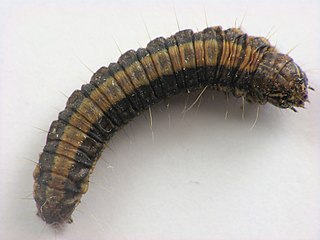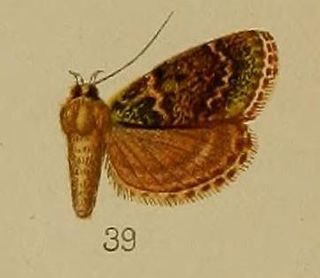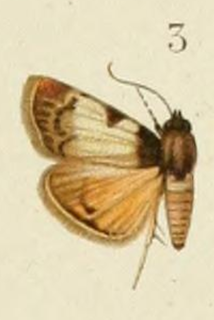Related Research Articles

New Zealand is an island country in the southwestern Pacific Ocean. It consists of two main landmasses—the North Island and the South Island —and more than 700 smaller islands, covering a total area of 268,021 square kilometres (103,500 sq mi). New Zealand is about 2,000 kilometres (1,200 mi) east of Australia across the Tasman Sea and 1,000 kilometres (600 mi) south of the islands of New Caledonia, Fiji, and Tonga. The country's varied topography and sharp mountain peaks, including the Southern Alps, owe much to tectonic uplift and volcanic eruptions. New Zealand's capital city is Wellington, and its most populous city is Auckland.

The Epipaschiinae are a subfamily of snout moths. Almost 600 species are known today, which are found mainly in the tropics and subtropics. Some occur in temperate regions, but the subfamily is apparently completely absent from Europe, at least as native species. A few Epipaschiinae are crop pests that may occasionally become economically significant.

Lepidogma is a genus of snout moths. It was described by Edward Meyrick in 1890.

Lepidogma ambifaria is a species of snout moth in the genus Lepidogma. It is known from Borneo and Sumatra in Indonesia.

Lepidogma chlorophilalis is a species of snout moth in the genus Lepidogma. It was described by George Hampson in 1912 and is known from Sri Lanka.
Lepidogma tamaricalis is a species of snout moth. It is found in mainland Italy and on Sardinia, in Asia, including Pakistan, as well as in North Africa and on the Iberian Peninsula.
Lepidogma violescens is a species of snout moth in the genus Lepidogma. It was described by Harrison Gray Dyar Jr. in 1914 and is known from Panama.
Lepidogma farinodes is a species of snout moth in the genus Lepidogma. It is known from Vietnam.
Lepidogma flagellalis is a species of snout moth in the genus Lepidogma. It is known from Borneo.
Lepidogma hyrcanalis is a species of snout moth in the genus Lepidogma. It is known from Iran.
Lepidogma latifasciata is a species of snout moth in the genus Lepidogma. It was originally described, by Wileman in 1911, under the noctuid genus Eulocastra. It is known from Hondo, and Yoshino, Japan.
Lepidogma megaloceros is a species of snout moth in the genus Lepidogma. It was described by Edward Meyrick in 1934, and is known from the Democratic Republic of the Congo.
Lepidogma melaleucalis is a species of snout moth in the genus Lepidogma. It was described by George Hampson in 1906 and is known from Ghana.
Lepidogma melanobasis is a species of snout moth in the genus Lepidogma. It was described by George Hampson in 1906 and is known from Japan, Taiwan and China.
Lepidogma melonolopha is a species of snout moth in the genus Lepidogma. It is known from Sri Lanka and Taiwan.
Lepidogma melanospila is a species of snout moth in the genus Lepidogma. It was described by George Hampson in 1916 and is known from Ghana.
Lepidogma minimalis is a species of snout moth in the genus Lepidogma. It was described by George Hampson in 1916 and is known from Sri Lanka.
Lepidogma obatralis is a species of snout moth in the genus Lepidogma. It was described by Hugo Theodor Christoph in 1877 and is known from Turkmenistan.
Lepidogma olivalis is a species of snout moth in the genus Lepidogma. It was described by Charles Swinhoe in 1895, and is known from India.
Lepidogma rubricalis is a species of snout moth in the genus Lepidogma. It was described by George Hampson in 1906 and is known from Zimbabwe and South Africa.
References
- ↑ Nuss, M.; et al. (2003–2011). "GlobIZ search". Global Information System on Pyraloidea. Retrieved September 29, 2011.
| This Epipaschiinae-related article is a stub. You can help Wikipedia by expanding it. |